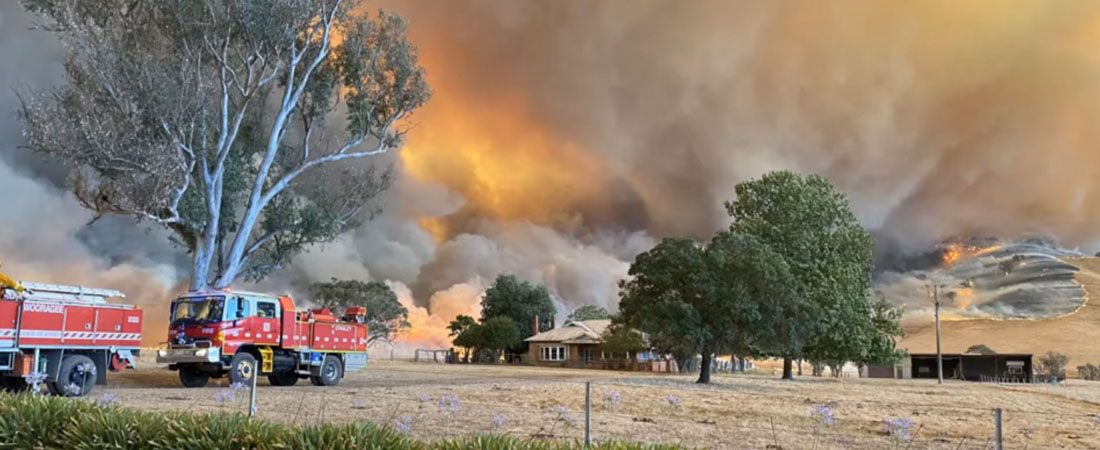
The unprecedented 2019-2020 bushfire season in Australia resulted in the devastating loss of life, property and wildlife across the nation. After the smoke cleared a Royal Commission was directed to work out not only how to prevent the severity of future bushfire seasons, but all natural disasters.
The Chair of the Commission, Mark Binskin, is a former Chief of the Air Force and Chief of the Defense Force. In the foreword to the report he wrote:
There are lessons for us all. Governments, essential service providers, insurers, charities, communities and individuals should consider what steps they must take across all phases of natural disasters to improve national natural disaster arrangements. It is undoubtedly in the national interest to do so.
The findings of the commission are extensive and comprehensive, as are the 80 recommendations in the 594-page report. During the 2019-2020 fire season, Australia experienced a live stress test of their system and identified lessons they learned, many of which can be also be applied to North America and the Mediterranean area where residents have to learn to live with wildfires.
Here are excerpts from the report.
National Emergency Response capability
- Over 9,800 fire personnel were deployed on bushfires during the 2019-2020 season.
- National resource sharing arrangements need to be strengthened to support resource sharing in times of crisis. We consider the development of a national register of resources would support situational awareness, and resource sharing, and inform national capability development.
- We consider that states and territories should update and implement plans to achieve interoperable communication for emergency services. We also recommend expediting efforts to create Public Safety Mobile Broadband to improve communications capabilities for emergency responders.
- Volunteers make up the majority of the fire and emergency services workforce in Australia. Volunteers need to be supported and enabled to participate in a way that respects the values of volunteerism, and considers the competing demands on their time. Increasing employment protections for fire and emergency services volunteers represents a way to support volunteer participation into the future.
- Some states and territories use data modeling and forecasting, or are working on planning tools to forecast resource needs. In Victoria, the Country Fire Authority (CFA) and Department of Environment, Land, Water and Planning (DELWP) have been working with CSIRO to develop a planning tool to forecast firefighting resources requirements for 2020 and 2050 for all fire regions in Australia based on the Forest Fire Index and two climate change scenarios. State and territory governments should have a structured process to regularly assess the capacity and capability requirements of fire and emergency services, in light of both current and future natural disaster risk.
- Australian, state and territory governments should consider whether national training for incident management roles would assist to increase numbers of trained personnel and support interstate deployments. These governments should also consider the development of an appropriate base standard of training or competency for roles that would obtain automatic national recognition.
- Australian, state and territory governments should conduct multi-agency, national-level exercises, not limited to cross-border jurisdictions. These exercises should, at a minimum: (1) assess national capacity, inform capability development and coordination in response to, and recovery from, natural disasters, and (2) use scenarios that stress current capabilities.
- Fire and emergency service volunteers should not suffer significant financial loss as a result of prolonged periods of volunteering during natural disasters. State and territory governments should continue their work to support and recognize fire and emergency services volunteers, including self-employed volunteers. State and territory governments should continue to support, recognize and incentivize employers who release employees to serve as fire and emergency services volunteers.
Capabilities of national aerial firefighting
- The Victorian Inspector-General for Emergency Management observed that, “The effectiveness of aerial firefighting resources and the deployment system in Victorian environments has not been extensively evaluated. A greater understanding of how aerial assets can support suppression efforts including first attack would allow Victoria to make more informed requests for aerial firefighting assets and ensure any assets provided are used to their greatest effect.” The governments of ACT, SA and Victoria also told us that they consider further research is required to improve aerial firefighting tactics, products and their effectiveness.
- Aerial firefighting capabilities vary between the states and territories, with some jurisdictions, such as the ACT, not owning any aircraft. Other jurisdictions own aircraft. For example, NSW owns a fleet consisting of three helicopters and the ‘Marie Bashir’ LAT, and has purchased a further four aircraft (two fixed-wing and two helicopters) which are expected to be available in 2020. [Note from Bill: The LAT is a 737 air tanker recently purchased from Coulson Aviation. The two fixed wing aircraft are Cessna Citation Lead/Intelligence jets; the two helicopters are Bell 412s. More info.]
- There is merit in considering what further benefits could be derived from even greater [interstate] collaboration in the use of available aerial firefighting resources.
- We heard that the current terms of aircraft service contracts are a disincentive for some Australian-based service providers. The majority of the providers we heard from told us that short contracts and minimal work during the off season make it unviable to invest in expensive aviation equipment. Contracts traditionally engage providers for 84 service days (70 in Tasmania) within the fire season, but we heard that more contracted service days would allow providers to invest in more equipment and offer greater value for money to fire agencies.
- The Aerial Application Association of Australia also told us that the length of contracts is insufficient to encourage industry to invest in aircraft and creates significant uncertainty in securing long-term finance. The Aerial Application Association of Australia also criticizes the short lead times for developing contract proposals with NAFC.
- The limited availability of aviation support personnel in Australia during the 2019-2020 bushfire season limited the sharing of personnel between jurisdictions and led to a greater reliance on personnel sourced from overseas.
- The optimal use of aerial firefighting is in the early stages of a bushfire. For an aircraft to provide effective assistance in the suppression of a bushfire it needs to be rapidly dispatched with minimal travel time and with necessary logistical support systems in place. Victoria, SA and WA each employ ‘pre-determined dispatch’-the purpose of which is to reduce the time for the aircraft to reach the fire -described as a ‘game changing system that should be adopted nationally’.
- On some occasions during the 2019-2020 bushfire season states and territories were unable to call upon additional aviation services when needed.
- Aviation services funded, in whole or in part, by the Australian Government should be shared between jurisdictions according to the greatest need.
- The availability of overseas-based aviation services during Australian fire seasons, particularly LATs, may be reduced by the increasing convergence of fire seasons in the northern and southern hemispheres.
- We also heard that Australian-licensed pilots were not licensed to operate foreign-registered aircraft used in Australia during the 2019-2020 bushfire season. For example, with the exception of the NSW-owned LAT, none of the LATs used in Australia during the 2019-2020 bushfire season were Australian-registered, and therefore Australian-licensed pilots were precluded from operating them.
- The Australian Federation of Air Pilots told us that it has approximately 5,000 Australia-based members employed as commercial pilots. This suggests Australia may have the potential to recruit and train the necessary expertise to operate firefighting aircraft currently sourced from overseas, including LATs, if such aircraft were owned and registered in Australia.
- Australian, state, and territory governments should work together to continue to improve Australia’s collective, Australian-based and operated, aerial firefighting capabilities. Though we see merit in the continued use of overseas-based aviation services and air crew in some instances, Australia’s current reliance represents a vulnerability, as demonstrated during the 2019-2020 bushfire season.
- The development of a modest Australian-based and registered national fleet of VLAT/LAT [Very large Airtanker/Large Air Tanker] aircraft and Type-1 helicopters, jointly funded by the Australian, state and territory governments, will enhance Australia’s bushfire resilience. A standing national fleet would ensure that the states and territories have the necessary resources to call upon during periods of high demand, without the need to reduce the operational capabilities of other jurisdictions. This standing fleet should also include situational awareness and support capabilities which may benefit from a nationally coordinated approach. Australia’s sovereign aerial firefighting capability should be supported by ongoing research and evaluation to inform specific capability needs, and the most effective aerial firefighting strategies.
- Australia’s sovereign aerial firefighting capability may be supplemented by overseas-based aviation services, where additional capacity is forecast to be required and available.
Role of Australian Defense Forces
- Improve understanding of Australian Defense Force capabilities.
- State and territory governments should take steps to ensure that there is better interaction, planning and ongoing understanding of Australian Defense Force capabilities and processes by state and territory fire and emergency service agencies and local governments.
- The ADF has finite capacity and capability. The capacity and capability of the ADF to respond to natural disasters can be affected by its commitment to its priorities, both domestic and international. The ADF should not be seen as a first responder for natural disasters, nor relied on as such.
- There should be greater representation by the ADF in state, territory and local government exercises, briefings, and planning for natural disasters.
- State and territory governments should take steps to ensure that there is better interaction, planning and ongoing understanding of Australian Defense Force capabilities and processes by state and territory fire and emergency service agencies and local governments.
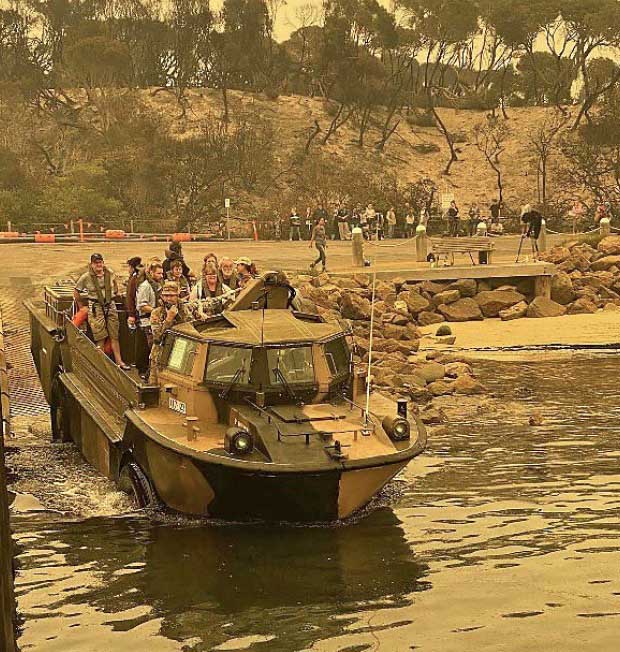
Fire Danger Rating System
State and territory governments should expedite the development and implementation of the Australian Fire Danger Rating System. It should ensure that there is national consistency in the visual display of the AFDRS and action to be taken in response to each rating.

Development of a national all-hazard warning app
National consistency may be better achieved by Australian, state and territory governments working together to develop national standards of information that should be included in emergency warnings apps and ensuring consistency in the data platforms used to enable, for instance, the private sector to aggregate the information into a consolidated national app.
To improve the functionality and utility of the apps, the Australian government should facilitate state and territory governments working together to develop national standards of information that should be included in bushfire warnings apps. These standards could then also be applied to other hazard-specific warning mobile applications, and could include:
- Consistent terminology and symbols;
- Consistent approach to assigning warnings to the bushfire (or other hazard)
extending coverage of each jurisdiction’s app to no less than 50kms into the neighboring state or territory; - Provision of push notifications so a user can be notified when updated emergency information is available;
- Information on when the data for the app were last updated, and/or the regularity with which data are updated;
- Information on road closures, fire front, fire direction, and fire spread prediction;
- Link to websites with additional information directed at supporting the community during an emergency.
Evacuation
- Evacuation planning guidelines and evacuation plans should be regularly reviewed and incorporate lessons learned from significant evacuations nationally.
- State, territory and local governments should consider the existence and condition of evacuation routes in evacuation planning, including for construction of roads and new communities.
- State and territory governments, working with local governments and fire and emergency service agencies, should ensure that there are appropriate arrangements for roadside vegetation management along evacuation routes.
- State and territory governments should, as a priority, adopt nationally consistent terminology and functions for the different sheltering facilities, including evacuation centers, Neighborhood Safer Places, places of last resort, and natural disaster shelters.
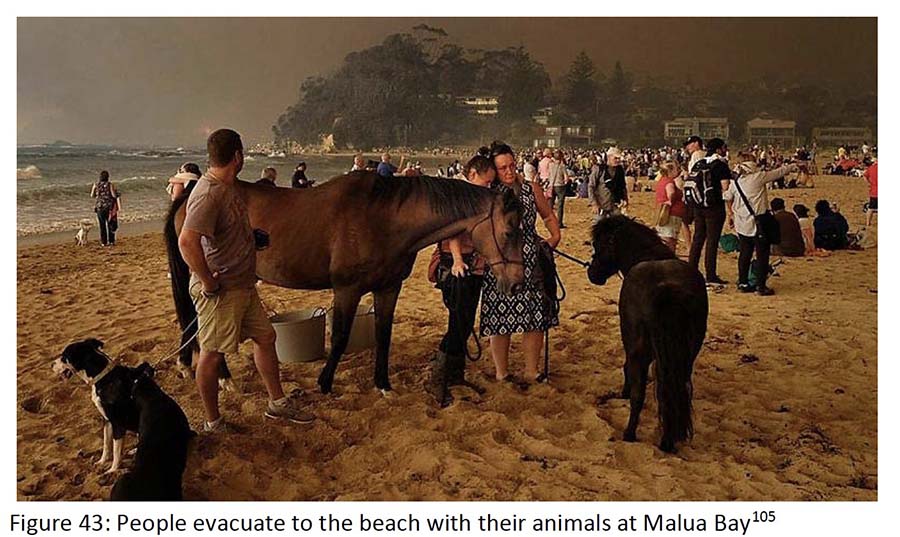
Land-use planning and building regulation
- Land-use planning regimes and building regulations govern how and where homes, businesses and infrastructure are built. They influence the exposure and vulnerability of structures and communities to natural hazards. They can also be used to mitigate risk and improve resilience.
- Land-use planning decisions and exposure to risk are inextricably linked. Existing, or ‘legacy’, risk needs to be identified and communicated, and proportionate action taken to reduce risk. Clear risk information supports individuals, communities, and governments to take informed action to manage those risks. Governments should work together to address legacy risk.
- The likelihood of increases in the severity and frequency of natural hazards should be taken into account in land-use planning and building decisions. These decisions should be informed by the best available data on current and future risk.
- The effectiveness of some standards intended to mitigate natural hazard risk is currently unclear and should be assessed to ensure that resources spent on mitigation efforts are effective and proportionate. Consideration should be given to the costs and benefits of amending the National Construction Code to add the resilience of buildings to natural hazards as an objective, in addition to the protection of life.
- Guidance for insurer-recognized retrofitting and mitigation. The insurance industry, as represented by the Insurance Council of Australia, working with state and territory governments and other relevant stakeholders, should produce and communicate to consumers clear guidance on individual-level natural hazard risk mitigation actions insurers will recognize in setting insurance premiums.
- State, territory and local governments should be required to consider present and future natural disaster risk when making land-use planning decisions for new developments.
Public and private land management
- There is strong public interest in, and there are polarizing views on, fuel management activities, particularly prescribed burning. There is clear benefit in public land managers improving the public’s knowledge and understanding of the fuel management.
- Considerable research has been undertaken into fuel management, particularly prescribed burning and how it influences fire behavior. However, gaps remain in the science, including in relation to the influence of fuels in extreme fires and the effectiveness and efficiency of fuel management strategies and techniques.
- Public land managers should clearly convey and make available to the public their fuel load management strategies, including the rationale behind them, as well as report annually on the implementation and outcomes of those strategies.
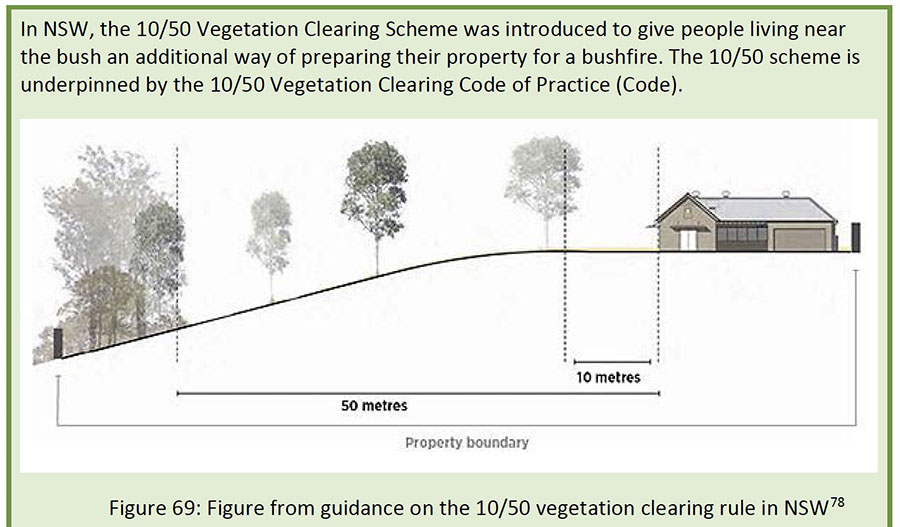
Thanks and a tip of the hat go out to Kenneth.

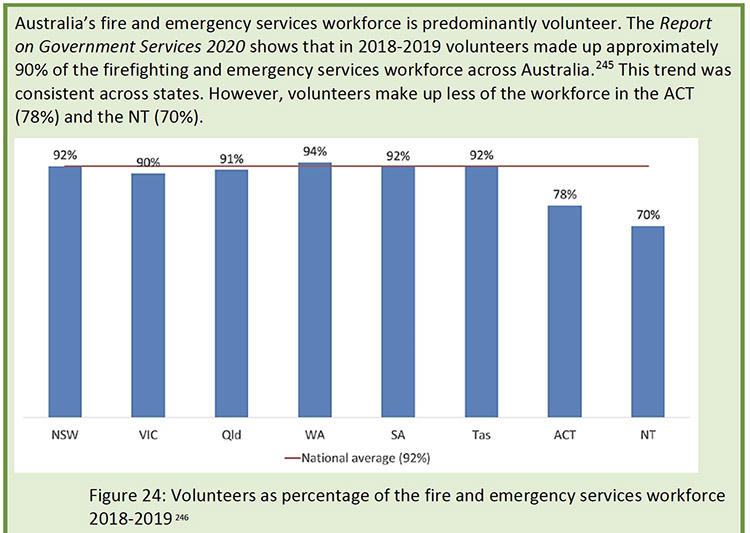
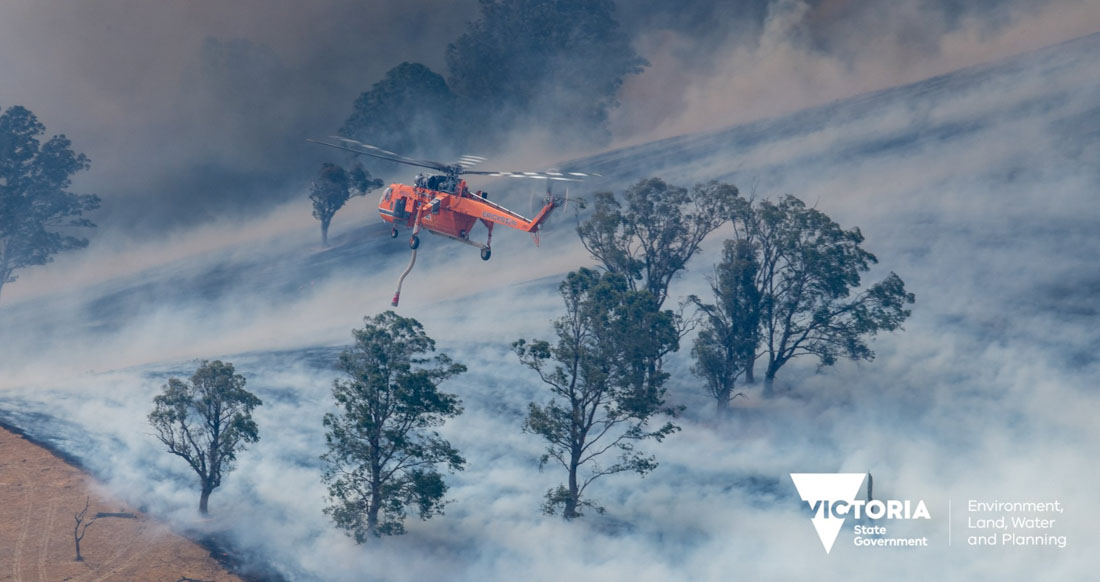

Hard to believe the report and article fail to mention MAFFS (www.maffs.com) as a key part of the solution of a new fleet. RAAF seems to want no part of actual aerial firefighting and is basically shirking its responsibility to defend the people and lands of Australia. They could and should be nurturing the development of their own pilots who would be the foundation of building Australia’s own defense capabilities. They already have C-130Js that could be in the fight in a year or so using their systems. Just look at the United States and its program with US Forest Service and the Air National Guard. The fires on the West Coast of the US and those in Australia require similar intelligent defense and action.